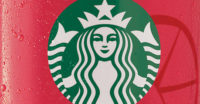Thirsty for Knowledge












|
“In the shop, that’s where the real battle happens,” says Steve Kelsey |
In the grocery aisle, the competition can be fiercer than a finale of “Project Runway,” the fashion design reality TV competition. Products are lined up next to their competitors with little to no opportunity to express why they should be the consumer’s choice. In food, drug, convenience and mass merchandise channels, one of the best ways to grab the consumer’s attention is with package design.
“In the shop, that’s where the real battle happens,” says Steve Kelsey, innovations director for PI Global. “You can do some very provocative stuff and very powerful stuff in advertising, but actually on the shelf [is] where the consumer makes up their mind, so from that perspective, the [package] has to work incredibly hard.”
Designing for demographics
As competitive as the shelf can be for beverage-makers, developing a one-size-fits-all package is easier said than done. Like the beverages themselves, packaging trends are subject to demographic population shifts, according to a January Mintel report titled “Beverage Packaging Trends.” The market research firm’s report finds that those who are older than 55 cite simple and easy-to-read beverage labels as being important. It adds that these consumers pay close attention to health claims; however, they do not believe this information is easier to find on a beverage label than on other packaging. The 55 and older consumer age group also is more likely to recycle than its counterparts. In contrast, Mintel found that those who are 25 years old or younger show a high acceptance for stylish, unusual designs, and they are less likely to rate health and nutrition attributes as important. They also do not rate functional packaging and recyclable packages as important.
Mintel also noted the increased acceptance and action toward recycling by the Asian population. Although this demographic remains small, it is growing faster than any other race, with the Asian community in the United States estimated to grow more than 31 percent from 2006 to 2016, the report states. This demographic expressed a willingness to buy eco-friendly products if they were less expensive, but also a willingness to pay a premium for eco-friendly packaging. However, like the older consumer age group, Asians identified more challenges than the average consumer in finding and identifying calorie and sugar content of beverages when looking at the label, according to Mintel.
| We design with the strategy of a simplified communications hierarchy |
Ingredient callouts
With a burgeoning natural and organic beverage market that offers products that contain fruit and vegetable juices, package design can be utilized to communicate a product’s nutrients and value-added ingredients.
“We design with the strategy of a simplified communications hierarchy, so consumers understand what servings of fruits and vegetables they will be enjoying with each product purchase,” says Jackie DeLise, vice president of new business development at HMSDesign. “Additionally, the visual metaphors represent the benefits of the product.”
She adds that when developing beverage packaging, the visualization of ingredients, for instance, communicates an appetizing appeal through photography or illustration that sets the standard for the brand from a taste standpoint. And with the proliferation of new product offerings within the beverage market, brand manufacturers are tasked even more to meet consumers’ evolving beverage needs, particularly in the premium refrigerated juice segment, she says.
“The category trend is toward a visual simplicity to allow the consumer the ease of shopping — and shop-ability in the category — to be confident in their brand selection based on the quality impression,” DeLise says.
Capitalizing on the label
| Women tend to have a greater interest in diet and nutritional claims in food and beverage products |
Consumers also echo the sentiments for simple and easy-to-read information on beverage labels. In Mintel’s “Beverage Packaging Trends” report, 79 percent of all respondents identified the most important feature of beverage labels as being easy to read without clutter. The report also found that 72 percent of respondents want to easily identify whether a beverage is all natural, which can have an inherent audience.
“Women tend to have a greater interest in diet and nutritional claims in food and beverage products, so it’s expected that they over-index in being able to easily tell if a product is all natural [in addition to] its nutritional content per serving and per container,” the report states.
Looking for a reprint of this article?
From high-res PDFs to custom plaques, order your copy today!











